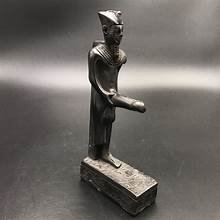Just kidding, as he was african descendant of course he have big blue mamba (not black mamba). arab sex videos top
Information about the physical characteristics of pharaohs, including penis size, is not well-documented and is often based on limited evidence and speculation. However, here is what is known from historical and archaeological sources:
- King Tutankhamun’s Mummy: The most famous pharaoh, King Tut, was mummified with an erect penis. This was highly unusual and, according to Egyptologist Salima Ikram, was likely a deliberate and symbolic act. It was not a reflection of his actual penis size but rather a way to link him with Osiris, the god of the afterlife, and his powers of regeneration and rebirth. The erect phallus was a powerful symbol of fertility and resurrection in ancient Egyptian religion. It should be noted that there has been some debate and even conspiracy theories regarding the size of King Tut’s penis, with some media reports speculating it was small, while Egypt’s antiquities chief has stated it was “well-developed.”
- General Mummification Practices: While King Tut’s mummification was unique, the treatment of male genitalia during the mummification process was not uniform. In some cases, the external genital organs were partially or totally cut off, or deformed, possibly for symbolic or religious reasons related to the myth of Osiris. In other cases, they were left intact. The practice of circumcision was also common among ancient Egyptians, including pharaohs.
- Artistic and Religious Depictions: In ancient Egyptian art and mythology, a large or erect phallus was often a symbol of fertility and divine power, not necessarily a reflection of individual size. The god Min, for example, was a god of fertility and was frequently depicted with an exaggeratedly large, erect penis. This imagery was a symbolic representation of his role in creation and agriculture, not a realistic portrayal of human anatomy.
In summary, there is no historical or scientific evidence to suggest that pharaohs, as a group, had a particular penis size. The specific case of King Tut’s mummification, with its erect phallus, was a powerful symbolic gesture with religious meaning, not a statement about his physical anatomy. arab sex videos top

Can the size of a Pharaoh’s penis be determined from a mummy?
Technically, it might be possible, but it is extremely limited and full of uncertainty. Here’s why:
1. Mummies are Not Ideal for Assessing Soft Organs
- Soft tissue such as the penis and testicles usually decays much faster than bone.
- The ancient Egyptian mummification process often removed internal organs, including sexual organs—especially in early and middle periods.
- Even if such organs remained, they would usually be dried, shrunken, and deformed, making them unreliable for estimating original size.
2. The Case of Tutankhamun: A Frequently Cited Example
- Tutankhamun is one of the most extensively studied Pharaoh mummies.
- When discovered, his penis was in an erect position (around 90 degrees)—a rare occurrence that drew researchers’ attention.
- Later, the penis was missing (suspected theft or damage) during relocation or modern autopsy.
- Its size at discovery would not reflect the true original size due to:
- Circumstances of death (possibly sudden),
- The embalming process,
- Natural decomposition.
3. Ethics and Scientific Relevance
- Scientific studies rarely focus on genital size unless related to genetic disease or rare deformities.
- The main focus is usually the cause of death, medical history, mummification techniques, and DNA analysis.
Conclusion:
It is not possible to accurately determine a Pharaoh’s penis size from a mummy, since the organ is usually damaged, removed, or no longer represents its original size due to mummification and the passage of time.
If you’re interested, we could go deeper into the mummification process and how the ancient Egyptians treated different body parts—including the spiritual symbolism involved.